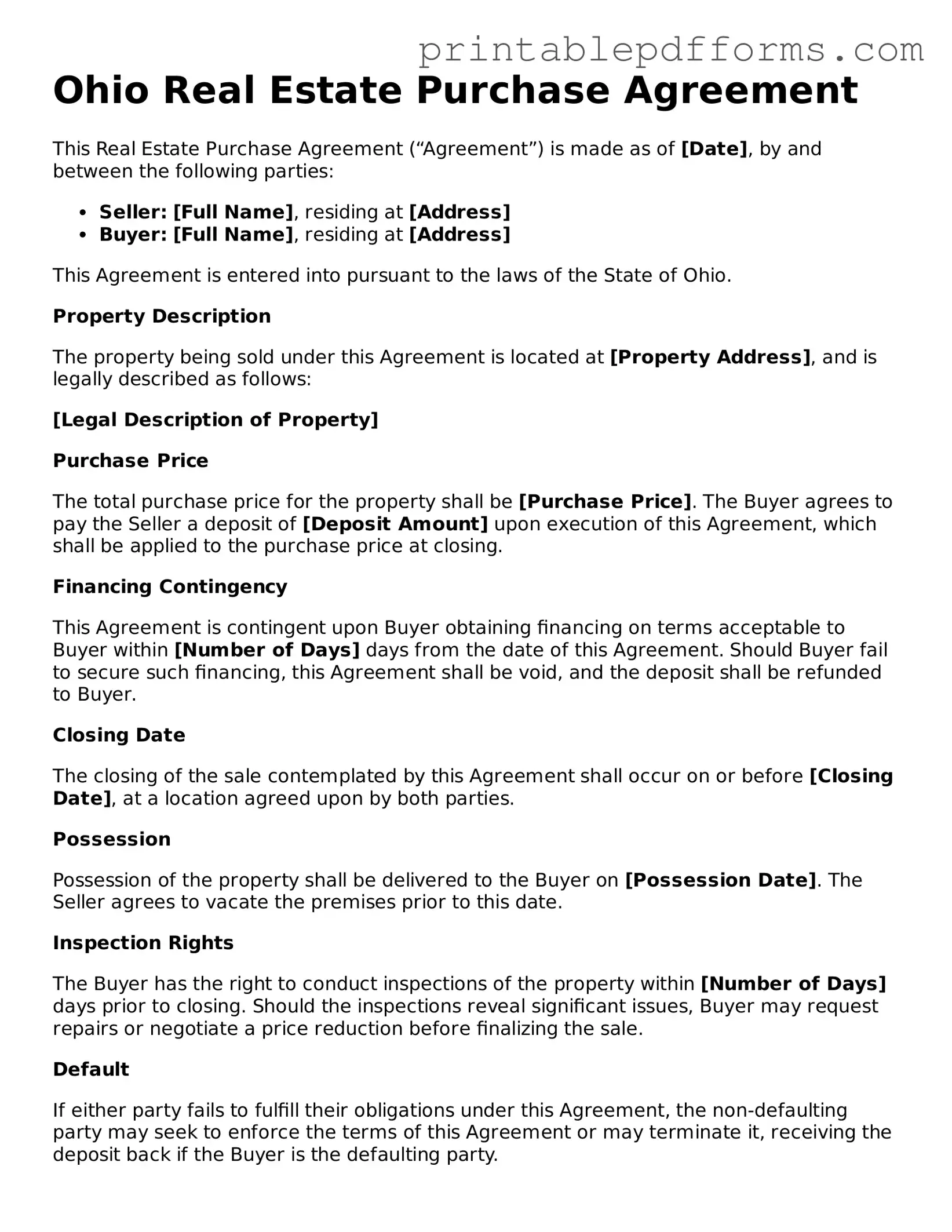Ohio Real Estate Purchase Agreement
This Real Estate Purchase Agreement (“Agreement”) is made as of [Date], by and between the following parties:
- Seller: [Full Name], residing at [Address]
- Buyer: [Full Name], residing at [Address]
This Agreement is entered into pursuant to the laws of the State of Ohio.
Property Description
The property being sold under this Agreement is located at [Property Address], and is legally described as follows:
[Legal Description of Property]
Purchase Price
The total purchase price for the property shall be [Purchase Price]. The Buyer agrees to pay the Seller a deposit of [Deposit Amount] upon execution of this Agreement, which shall be applied to the purchase price at closing.
Financing Contingency
This Agreement is contingent upon Buyer obtaining financing on terms acceptable to Buyer within [Number of Days] days from the date of this Agreement. Should Buyer fail to secure such financing, this Agreement shall be void, and the deposit shall be refunded to Buyer.
Closing Date
The closing of the sale contemplated by this Agreement shall occur on or before [Closing Date], at a location agreed upon by both parties.
Possession
Possession of the property shall be delivered to the Buyer on [Possession Date]. The Seller agrees to vacate the premises prior to this date.
Inspection Rights
The Buyer has the right to conduct inspections of the property within [Number of Days] days prior to closing. Should the inspections reveal significant issues, Buyer may request repairs or negotiate a price reduction before finalizing the sale.
Default
If either party fails to fulfill their obligations under this Agreement, the non-defaulting party may seek to enforce the terms of this Agreement or may terminate it, receiving the deposit back if the Buyer is the defaulting party.
Governing Law
This Agreement shall be governed by and construed in accordance with the laws of the State of Ohio.
Signatures
In witness whereof, the parties have executed this Agreement as of the day and year first above written.
- Seller's Signature: ___________________________ Date: [_________]
- Buyer's Signature: ___________________________ Date: [_________]
This template is meant to serve as a guide for creating an Ohio Real Estate Purchase Agreement. It may require modification based on individual circumstances.
